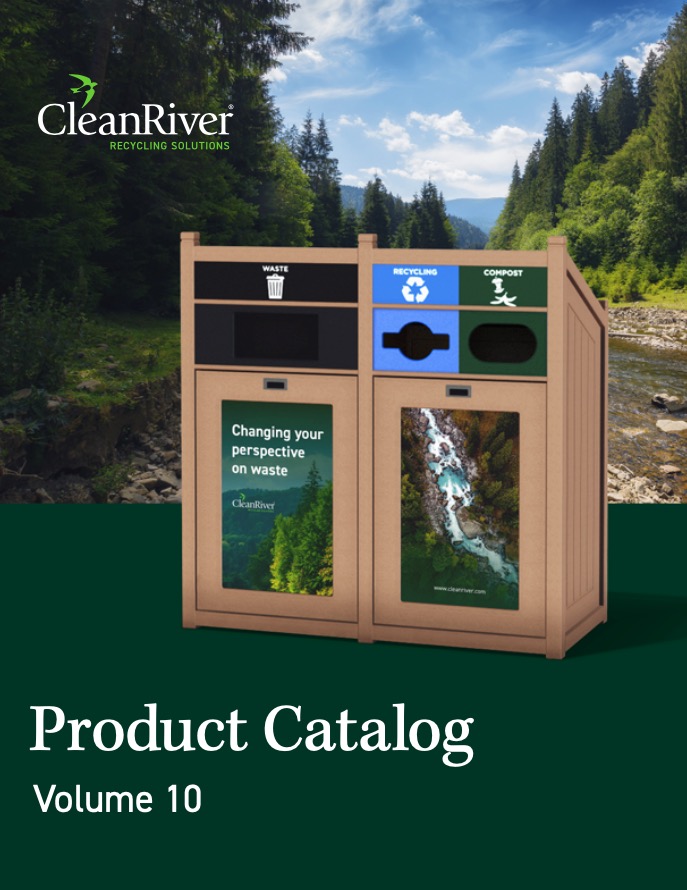Share
As venues that host tens of thousands of people for sports events, concerts, and various entertainment, stadiums and arenas generate significant amounts of waste. Properly managing this waste through effective recycling programs not only reduces environmental impact but also demonstrates a commitment to sustainability. This guide will explore the best recycling bins for stadiums and arenas, providing insight into choosing the right solutions for different areas and needs.
Understanding the Waste Stream
Before selecting recycling bins, it’s essential to understand the types of waste typically generated at stadiums and arenas. This waste can be broadly categorized as follows:
- Beverage Containers: Plastic bottles, aluminum cans, glass bottles.
- Food Waste: Leftover food, compostable items.
- Paper Products: Programs, napkins, cardboard packaging.
- Plastics: Utensils, food packaging.
- General Trash: Items that cannot be recycled or composted.
Effective waste management in these large venues requires sorting at the source. This means placing the right bins in strategic locations to maximize recycling and minimize contamination.
Choosing the Right Bins for Different Areas
1. Concourse Areas
Concourse areas see high foot traffic and generate a mix of recyclable materials and trash. It’s vital to have clearly marked and strategically placed bins to encourage proper waste sorting.
Recommended Bins:
- Multi-Stream Recycling Stations: These bins allow for multiple types of recyclables and trash to be sorted at a single station. Look for models that offer flexible configurations and clear labelling to reduce contamination.
- Compact Bins: Smaller, easily accessible bins for specific recyclables such as beverage containers can be placed next to food stalls and seating areas.
2. Seating Areas
Seating areas primarily generate beverage containers and food packaging. Bins should be easy to reach without obstructing walkways or views.
Recommended Bins:
- Cup and Bottle Bins: Designed specifically for collecting beverage containers, these bins, such as the MiniBin, can be placed at the end of rows or near exits for easy disposal.
- Waste and Recycling Dual Bins: These bins provide separate compartments for recyclables and trash, helping to keep the seating area clean and organized.
3. Food Courts
Food courts generate a diverse waste stream including food scraps, compostable items, and various recyclables. It’s crucial to provide options for composting as well as recycling.
Recommended Bins:
- Composting Stations: Composting Stations facilitate the collection of organic waste, which can be composted rather than sent to landfills.
- Multi-Stream Sorting Stations: These stations such as Flex E™ bin, similar to those used in concourses, help sort various recyclables and trash, with configurations tailored to handle food court waste.
4. Restrooms
Restrooms typically generate paper towels and general trash. Providing recycling options here can be challenging but not impossible.
Recommended Bins:
- Paper Towel Recycling Bins: Designed specifically for paper towels can reduce landfill waste.
- General Waste Bins: Durable bins for non-recyclable trash that cannot be avoided in restroom areas.
5. VIP and Private Boxes
VIP and private boxes often have a unique waste profile, including glass bottles, higher-quality food packaging, and sometimes electronics or event-specific materials.
Recommended Bins:
- Customizable Bins: High-end, aesthetically pleasing bins that can be tailored to the specific waste stream and décor of VIP areas.
- Specialty Bins: For specific needs like electronics or unique recyclables, bins like the Electronics Recycling Station can be used.
6. Back-of-House and Employee Areas
These areas generate waste from food preparation, cleaning, and operational activities. Efficient recycling and waste management can help streamline operations and reduce overall waste.
Recommended Bins:
- Industrial-Grade Bins: Sturdy, large-capacity bins for bulk recycling and waste, suitable for collecting large quantities of recyclables or waste from operations.
- Organizational Bins: Bins that help sort and organize recyclables like cardboard, plastic wrap, and other operational waste.
Best Practices for Implementation
1. Signage and Labeling
Clear signage and labelling are crucial for reducing contamination and increasing recycling rates. Use images and simple language to indicate what can and cannot be recycled.
2. Education and Training
Staff and visitors need to be educated about proper recycling practices. Provide training for employees and educational materials for attendees to ensure everyone understands how to use the bins correctly.
3. Strategic Placement
Bins should be placed in high-traffic areas where waste is most likely to be generated. Ensure that bins for different types of waste are co-located to make sorting easy and convenient.
4. Regular Monitoring and Maintenance
Regularly check and empty bins to prevent overflow and contamination. Use data from waste audits to adjust bin placement and capacity as needed.
5. Feedback and Improvement
Gather feedback from staff and visitors about the recycling program and be open to making improvements. Innovations in bin design and placement can enhance the program’s effectiveness.
Conclusion
Selecting the right recycling bins for stadiums and arenas is a critical component of an effective waste management strategy.
By understanding the unique waste streams of different areas and choosing bins that meet these needs, venues can significantly reduce their environmental impact while providing a cleaner and more enjoyable experience for attendees.
CleanRiver offers a range of customizable and flexible recycling solutions to meet the diverse requirements of stadiums and arenas, supporting both sustainability and operational efficiency.
Ready to make a change? Discover the ideal recycling bins for your restaurant with CleanRiver’s Product Finder Tool.
Remember… Don’t be trashy, recycle! It’s a bin-eficial choice for everyone!

